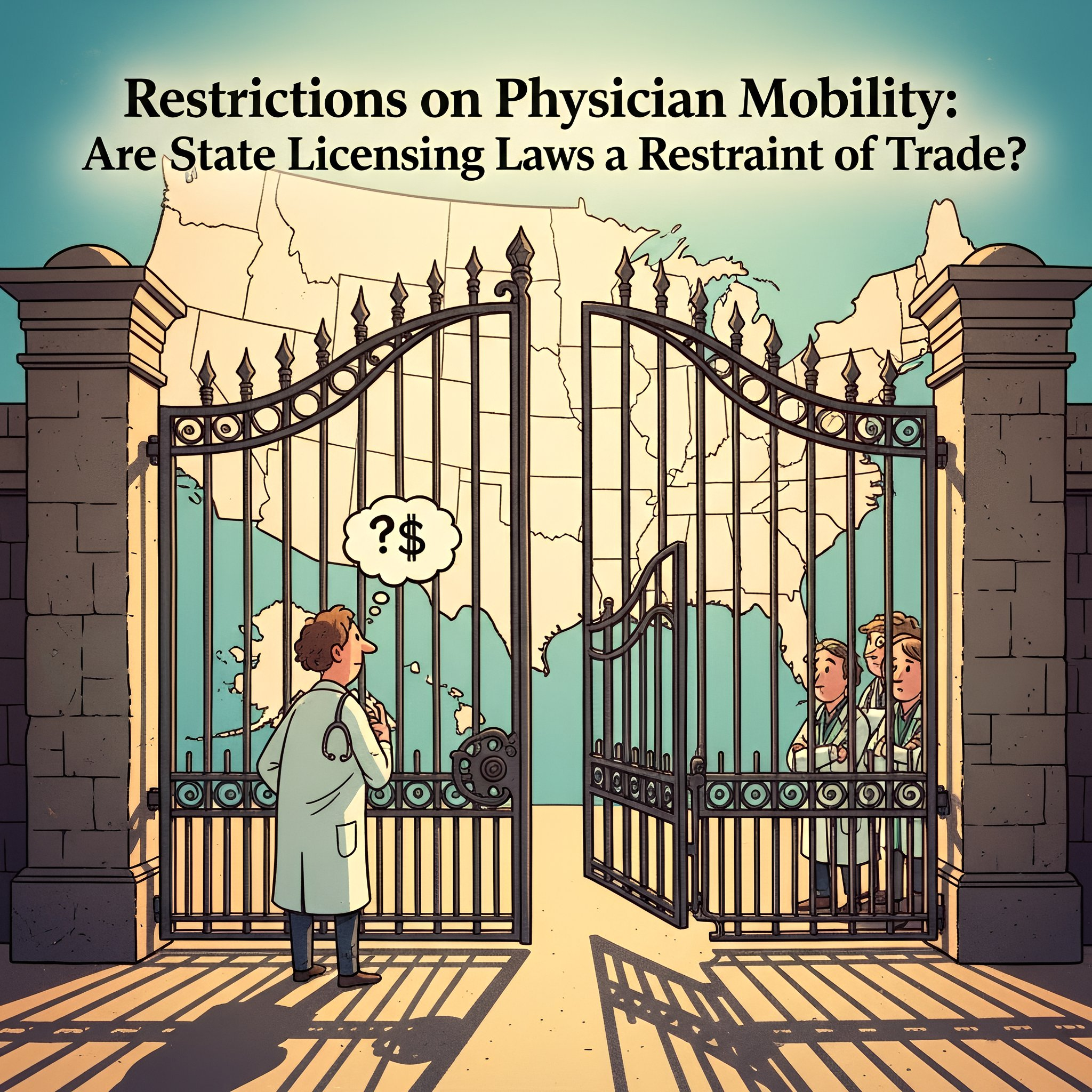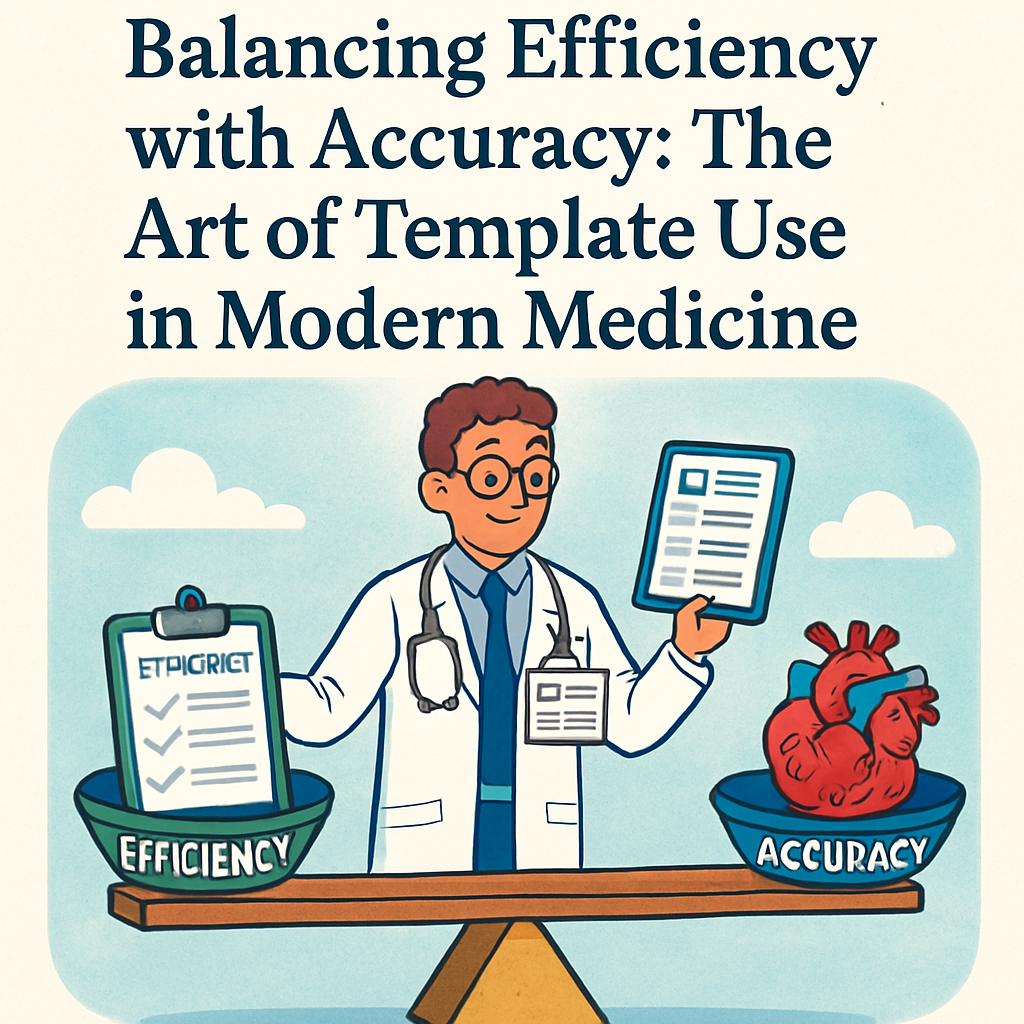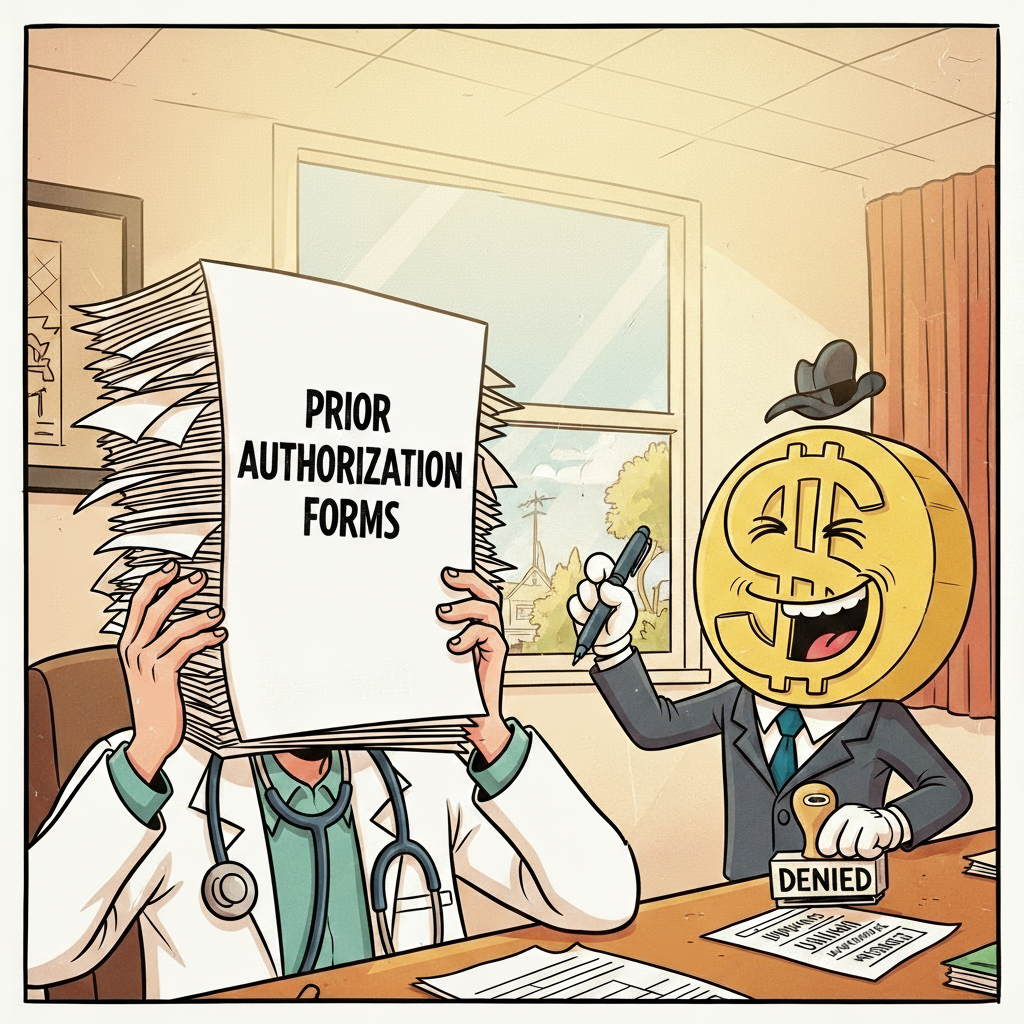
Restrictions on Physician Mobility: Are State Licensing Laws a Restraint of Trade?
Doug Jorgensen
March 1, 2025
Introduction: When Geography Becomes a Barrier to Care
In a world where a patient can video chat with a provider across the country in seconds, it’s worth asking: why do state lines still serve as hard borders for medical practice?
Physicians are often required to hold a separate license for each state where they see patients—even via telemedicine.
What began as a well-intentioned safeguard has, in many ways, become a barrier to access, competition, and innovation.
The Original Rationale
State licensing laws were designed to:
- Ensure providers met local standards of care
- Allow state medical boards to oversee and discipline practitioners
- Protect patients from fraud or unqualified care
These goals made sense in the pre-digital era, when most care was local and medical records stayed in filing cabinets.
The Modern Reality
Today, restrictive licensing rules can:
- Delay provider mobility
- Limit access in underserved areas
- Create administrative and financial burdens for physicians
- Block efficient use of telemedicine to fill coverage gaps
For example:
- A specialist licensed in New Hampshire might be barred from treating a long-time patient who relocates to Maine without obtaining a new license.
- Telemedicine providers must sometimes obtain—and pay for—licenses in dozens of states just to operate nationally.
The Interstate Medical Licensure Compact (IMLC)
The IMLC was introduced to streamline multi-state licensing for physicians in participating states.
While it has improved speed in some cases, it still:
- Requires separate fees for each state license
- Leaves non-participating states as outliers
- Doesn’t address the root question: why do we need 50 different licenses for the same standard of care?
The Restraint of Trade Argument
From an economic perspective, state-by-state licensing:
- Reduces competition by limiting the number of providers in a given market
- Creates artificial scarcity, driving up costs for patients
- Protects local provider monopolies at the expense of broader access
When providers are blocked from practicing across state lines without a clear public safety benefit, it starts to look less like patient protection and more like economic protectionism.
The Patient Impact
Rural and Underserved Areas
Patients in rural areas may have access to telemedicine technology but still face limited options if nearby specialists aren’t licensed in their state.
Continuity of Care
Patients who move across state lines—especially the elderly or those with chronic illnesses—can lose access to trusted providers.
Delays in Care
Licensing applications can take months to process, leaving provider shortages unaddressed.
Potential Solutions
- National Medical License
- A single license allowing practice in all U.S. states and territories.
- A single license allowing practice in all U.S. states and territories.
- Expanded Interstate Compacts
- Broaden participation and reduce administrative fees.
- Broaden participation and reduce administrative fees.
- Reciprocity Agreements
- States recognizing licenses from others, especially for telemedicine.
- States recognizing licenses from others, especially for telemedicine.
- Special Licenses for Emergencies and Follow-Up Care
- Streamlined approvals for established patients moving across state lines.
- Streamlined approvals for established patients moving across state lines.
Final Thoughts: Removing Unnecessary Friction
Licensing is essential for public safety—but the current system often prioritizes bureaucracy over access.
In an era where technology can erase geographic barriers, our regulatory structure shouldn’t rebuild them.
Physicians are ready and willing to serve where they’re needed. The real question is whether the rules will allow it.
About the Author
Douglas J. Jorgensen, DO, CPC, FAAO, FACOFP
Dr. Doug is a physician, consultant, and national educator on healthcare policy and regulatory compliance. He advocates for practical reforms that expand patient access while preserving the integrity of medical licensing.


